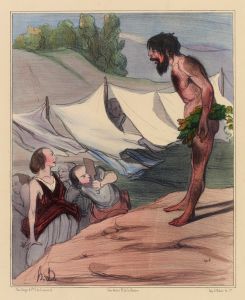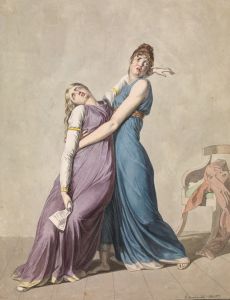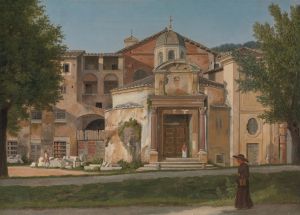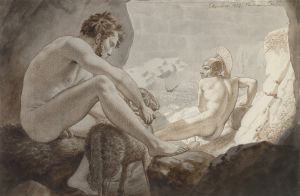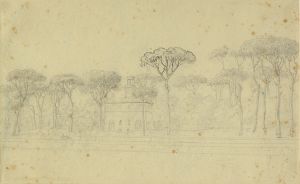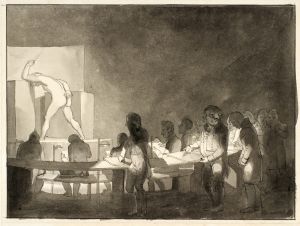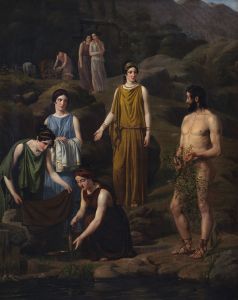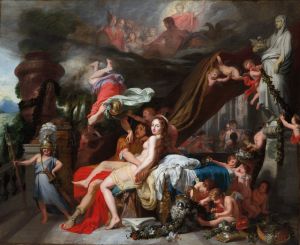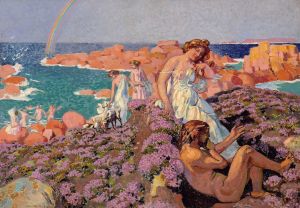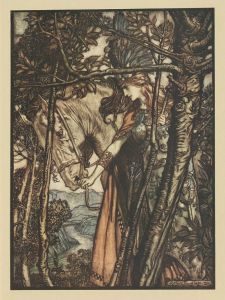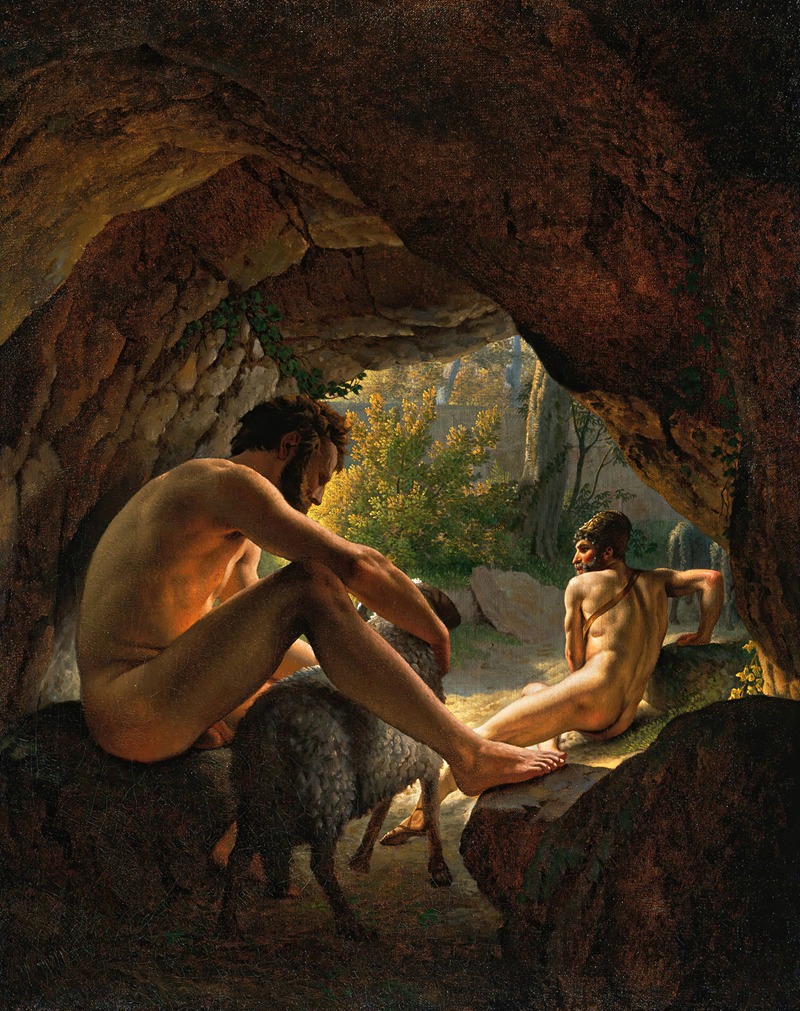
Ulysses Fleeing the Cave of Polyphemus
A hand-painted replica of Christoffer Wilhelm Eckersberg’s masterpiece Ulysses Fleeing the Cave of Polyphemus, meticulously crafted by professional artists to capture the true essence of the original. Each piece is created with museum-quality canvas and rare mineral pigments, carefully painted by experienced artists with delicate brushstrokes and rich, layered colors to perfectly recreate the texture of the original artwork. Unlike machine-printed reproductions, this hand-painted version brings the painting to life, infused with the artist’s emotions and skill in every stroke. Whether for personal collection or home decoration, it instantly elevates the artistic atmosphere of any space.
"Ulysses Fleeing the Cave of Polyphemus" is a painting created by the Danish artist Christoffer Wilhelm Eckersberg in 1812. Eckersberg, often referred to as the father of Danish painting, was a pivotal figure in the Danish Golden Age of painting. His works are known for their meticulous attention to detail, classical composition, and clarity.
The painting depicts a scene from Homer's epic poem, "The Odyssey," specifically the moment when Ulysses (Odysseus) and his men escape from the cave of the Cyclops Polyphemus. In the myth, Ulysses and his crew are trapped in the cave by the giant Cyclops, who begins to eat them one by one. Ulysses devises a cunning plan to escape: he blinds Polyphemus and then ties his men to the undersides of the Cyclops's sheep. As Polyphemus lets his sheep out to graze, he feels their backs to ensure no men are escaping, but he does not check underneath, allowing Ulysses and his men to flee.
Eckersberg's painting captures the dramatic moment of escape. The composition is carefully structured to convey the tension and urgency of the scene. Ulysses is depicted in the foreground, guiding his men out of the cave. The use of light and shadow is particularly notable, with the dark interior of the cave contrasting sharply with the bright daylight outside, symbolizing the transition from danger to safety.
Eckersberg's attention to anatomical detail and his ability to convey emotion through body language are evident in the figures of Ulysses and his men. The expressions and postures of the characters reflect their fear and determination. The artist's use of color further enhances the dramatic effect, with the earthy tones of the cave interior contrasting with the vibrant colors of the outside world.
This painting is an excellent example of Eckersberg's skill in combining classical themes with a realistic approach to human figures and landscapes. It reflects his training at the Royal Danish Academy of Fine Arts and his studies in Paris and Rome, where he was influenced by the works of Jacques-Louis David and other neoclassical artists.
"Ulysses Fleeing the Cave of Polyphemus" is housed in the National Gallery of Denmark (Statens Museum for Kunst) in Copenhagen. It remains one of Eckersberg's most celebrated works, showcasing his ability to bring mythological scenes to life with precision and emotional depth. The painting not only highlights Eckersberg's technical prowess but also his ability to tell a compelling story through art.






